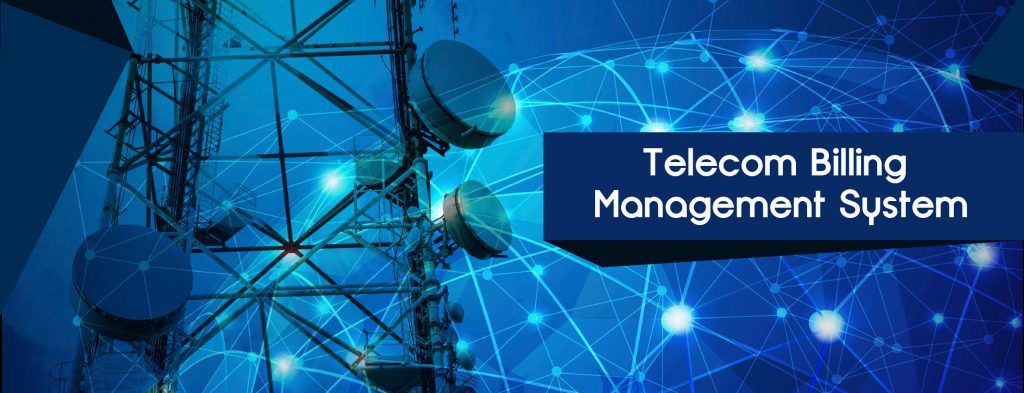A study by ‘Stratistics MRC’, a leading global survey company, reveals that global telecom billing market is expected to grow from $8.98 billion in 2017 to $20.99 billion by 2026. This stat shows a compound annual growth rate of nearly 10%, which indicates quite a prominent rise in the importance of telecom billing management system. The projected growth in the field of billing clearly shows that most companies realize its potential as the difference maker and consider it to be the tool that breaks the tie between competitors.
The collection, processing, and presentation of data from numerous sources, including network usage, customer profiles, contracts, tariffs, and promotions, constitute the complicated and dynamic process of telecom billing. The tools and methods used by telecom operators and service providers to optimise their billing performance, raise customer satisfaction levels, and create new income sources are known as telecom billing analytics and insights.

The Fading Line between OSS and BSS in Telecom
Another reason why the focus of telecom companies is on telecom billing management is due to the blurring lines between OSS and BSS in telecom. The legacy hardware utilized in telecom billing was specifically created for handling OSS BSS telecom tasks separately. BSS tasks were tied to BSS hardware and OSS tasks were bound with OSS hardware. However, this way of operation leads to underutilization of the system.
An operating system known as telecom billing software links to a phone company’s switch and gives information on all client accounts as well as the condition of each line. Because it enables operators to bill for their services, keep track of expenditures, and make savings, telecom billing software is essential. Modern telecom billing systems are available from anywhere since they are web-based. Learning how to use this software may help a firm save both time and money.
Reason for Underutilization of OSS BSS Telecom Hardware
The biggest reason for this underutilization is that there are certain applications in OSS/BSS operations that reach their peak at specific times. For example, billing application that is a part of BSS is only run frequently at the end of the billing cycle and ticketing application is executed frequently when the network is congested. At other times, BSS and OSS hardware remains underutilized, which is a complete waste of precious hardware resources.
OSS and BSS collaborate to provide customers with effective service
Launching new telecom services requires the integration of OSS and BSS since it ensures that the services can be advertised, installed, and maintained. The majority of mobile network manufacturers offer both OSS and BSS as a component of a single overall solution.
BSS works with the business and customer side, whereas OSS deals with the network and technology side. For the reliable and effective delivery of services to millions of customers, OSS and BSS collaborate closely and combine their technical and commercial strengths.
Proposed Solutions for Maximizing Utilization of OSS and BSS in Telecom
A great way to offset the poor utilization of these resources is by virtualization of all OSS/BSS applications. Virtualization, better known as NFV (Network Functions Virtualization) in the telecom billing domain, decouples software and hardware, which are bound together. This provides flexibility to telecom service providers in terms of scaling OSS/BSS applications up and down as per the requirement of resources. With virtualization, it is possible to share hardware resources for applications like CRM management, billing, service planning etc. depending on their peak utilization period.
A school of thought also promotes the use of big data technologies and the utilization of NoSQL databases for higher degree of horizontal scaling of OSS/BSS applications. Considering how popular the emerging beliefs are and how they can help in tapping the full potential of hardware, it makes good business sense to invest in a telecom billing management system that is inspired by the latest tech.
Other Evolving Trends in Telecom Billing Management System
According to the study by Stratistics MRC, fraud management section (in telecom software) is anticipated to grow at a faster pace in the near future. It is expected that telecom billing management solutions of the future should be able to analyze historical data and give pointers to telcos about how to prevent frauds. It is also expected that technologies like ‘Blockchain’, which have become popular due to the proliferation of digital currencies, will be used as part of telecom billing solutions in the coming years.
Regardless of whether you run a small or large business, telecom billing software has been around for many years and can be trusted to process your bills quickly. Additionally, telecom billing software may be used to build specialised reports or graphs that you can use to examine or show data in a variety of ways. To streamline customer care and speed up response times, this kind of software may also aggregate consumer information like their address and phone number.
Read More: All You Need to Know about the Operations of Telecom Postpaid Billing System

